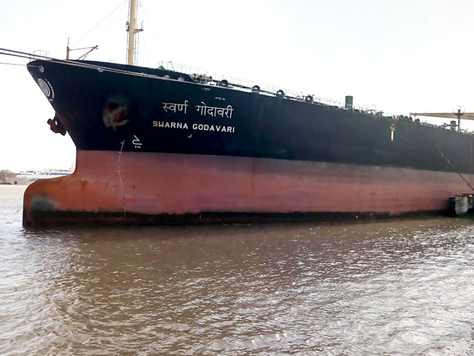
India is expected to be the largest driver of global oil demand growth between 2023 and 2030, narrowly taking the lead from top importer China, the International Energy Agency (IEA) said on Wednesday.
India is expected to be the largest source of oil demand growth in the world this decade, narrowly beating out China, as shipbroker Poten & Partners reports citing information from IEA.
Changes in India’s refining and petrochemical industry will change the country’s crude oil and refined product balances over this period.
India is currently the world’s third largest oil importer and consumer, behind China and the United States.
The IEA forecasts that India’s oil demand will grow 1.2 million barrels per day between 2023 and 2030, reaching 6.6 Mb/d. India’s growth will account for more than one-third of total global oil demand growth during that period.
Furthermore, India has a large and sophisticated refining industry, currently assessed at 5.8 Mb/d and the IEA expects this to expand by 1 Mb/d by the end of the decade. The largest and most modern facilities are owned by the private sector.
While this expansion is targeted towards satisfying increased domestic demand, India will remain a major product exporter.
Since 2017, India has consistently exported 1.2 – 1.3 Mb/d of products and this is unlikely to change going forward. Chances are that more product will become available for export as new refining capacity comes on stream and demand takes some time catching up. “This should benefit all product carrier segments, including LR1s and LR2s,” shipbroker Poten & Partners said last week in its tanker opinion.
Following Europe’s embargo on Russian oil imports in early 2023, India has become a major provider of middle distillates to the EU. However, the conflict in the Middle East has limited flows in recent months as the Suez Canal route has become increasingly dangerous.
Indian products are less competitive in Europe if vessels have to take the long-haul route via the Cape of Good Hope, especially with the current elevated freight rates for LR1s and LR2s, so shipments to Europe started to decline.
“However, this is not expected to be a lasting situation,” the shipbroker added.
On the crude oil side of the equation, India does not produce a lot of oil domestically. In 2023, crude oil production was about 600,000 b/d. This means that India imports about 90% of its refinery intake. Much of its crude oil traditionally comes from the Middle East, which is geographically close.
Saudi Arabia and Iraq continue to be key suppliers. Africa, Latin America and North America used to be important suppliers as well, but since 2022, cheap supplies from Russia have displaced many of these barrels.
The IEA does not expect that India will pivot away from the heavily discounted Russian barrels. However, for incremental demand (including adding to India’s Strategic Petroleum Reserve), the expectation is that India will try to maintain a diversified group of suppliers, which will include countries in the Atlantic Basin, such as the United States, Guyana, Mexico, Brazil, and Venezuela.
As Poten concludes in its report, “stable refined product exports and increasing crude oil imports will enhance India’s role in the tanker market. India uses a variety of vessel sizes in both crude oil and product tanker trades and all segments will likely benefit.”


